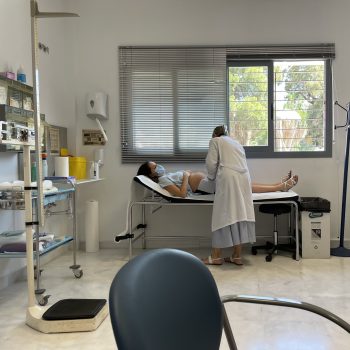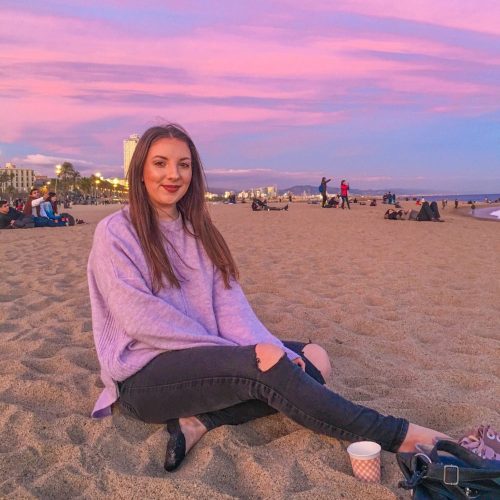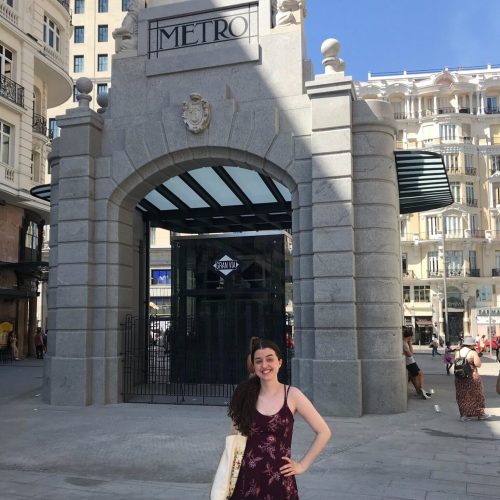
Expat Life in Madrid
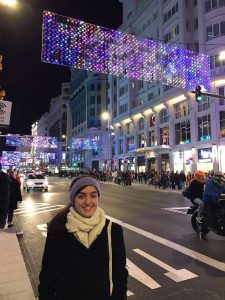 We are excited to share with you our new series called “Expat Life in Spain” where we talk to expats living in different cities around Spain. By sharing interviews with some of the expats we admire living in Spain, we hope to bring you stories to help you better see your own journey. In many of these cases. our guest writers also have blogs or offer other resources of their own where you can connect to them and we hope you get in touch if you have learned something valuable.
We are excited to share with you our new series called “Expat Life in Spain” where we talk to expats living in different cities around Spain. By sharing interviews with some of the expats we admire living in Spain, we hope to bring you stories to help you better see your own journey. In many of these cases. our guest writers also have blogs or offer other resources of their own where you can connect to them and we hope you get in touch if you have learned something valuable.
Today we are sharing a guest post from Sarah Willats. Sarah is an American author, translator and teacher who is currently based in Madrid with her Northern Irish husband. She loves languages, different cultures, living in Spain, eating international cuisines, a good cup of tea, photography and exploring new places.
Sincerely, Spain: Tell us a little bit about your Spain story and how you ended up in Madrid.
Sarah Willats: My connection to Spain goes back just over eleven years ago. During my junior year of college, I studied abroad in Seville for the spring semester. I had a more immersive experience than most I feel like because I only took one course taught in English, lived with an older Spanish couple from the working-class neighborhood of Triana, made Spanish friends, went to conversation exchanges/tandems often, and listened to music and watched movies in Spanish. I spent very little time speaking English, compared to what I was used to in the U.S.
I am almost certain that had I not made such a strong connection to Spain, the people, and the culture early on, I may have been more likely to have moved on to another part of the world after I returned from my semester abroad to finish my degree. I had worked hard to use both scholarship money and personal funds to even go abroad in the first place so the experience was very dear to me and leaving was quite emotional, all the fun trips and souvenirs aside. I was leaving actual people who didn’t all speak my native language but they were people I had surprisingly formed a strong bond with in such a short amount of time. I’m happy to say that I have maintained a good portion of those friendships for over a decade now, watching as each of us has navigated different stages of life, travels, moves abroad, and my own personal move back to Spain.
 With Madrid in particular, I had liked visiting quite a few times in the past but somewhere along the line, I had decided that it wouldn’t be a city I’d want to live in. The only way I can explain it now is that I must have had the wrong impression.
With Madrid in particular, I had liked visiting quite a few times in the past but somewhere along the line, I had decided that it wouldn’t be a city I’d want to live in. The only way I can explain it now is that I must have had the wrong impression.
I used to think that because Madrid was a big metropolitan city, it didn’t have a very Spanish feel to it. I had heard that Barcelona can feel less authentically Spanish to some people and that Madrid maintains a more traditional Spanish feel to it but for the longest time, I wasn’t convinced. And to be honest, I was actually wrong in thinking that Madrid didn’t feel “Spanish” enough.
A visit I made back in early 2016 changed my mind about that entirely. My impression started to gradually change when I was staying with a friend outside of the city center and she took me around a couple of neighborhoods I had never been in before and introduced me to her local Spanish friends. And on top of that, I had planned a couple of trips to museums and the Biblioteca Nacional (the national library that requires a special pass to access and is only for research purposes) during the week and met a lovely local author. All of those experiences really helped to flip-flop the narrative of Madrid in my head.
When I went back to Santiago de Compostela (Galicia), where I was living at the time, I started to notice a few more things that bothered me, and all of that got me thinking about how I might want to change regions next year. I did put in a late regional change request at the end of March that year because the rain and high humidity in the region had started to make me feel more achy than usual.
As luck would have it, the Xunta de Galicia accidentally retracted my and several other auxiliares’ regional placements so I jumped on the opportunity to email the central office and ask if they could place me in Madrid -ironically my second choice- for the upcoming year. At that time, changes and requests were granted fairly easily but unfortunately, that is not the case with the Auxiliar de Conversación program today.
Sincerely, Spain: What is your daily life like in Madrid?
Sarah Willats: I am slightly sad to say that my daily life pre-pandemic and my daily life now have changed quite a bit. Madrid hasn’t really felt like the lively city that it usually does but that’s been changing. It’s really only in the last few months that I’ve felt I’ve been able to see my old life and the city both starting to revive themselves once again.
For my first year in Madrid, I had a morning commute to a school inside Zone A on the northeastern side of the city. It only lasted a school year (nine months) because the following summer, I applied for a work visa through a process called student visa modification. I was successfully approved to work as a freelancer by the Spanish government in whichever sector I wanted to work in (provided I could do it on a freelance basis) but I had initially applied with a business plan offering my copywriting, translation, and editing skills in native American English. At the time I believed my days of teaching English were over but it turns out with the high demand for English teachers all around Spain, it’s good to have some private classes on the side.
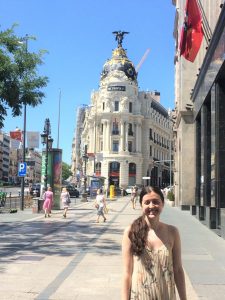 Since I work as a freelancer (and have been for almost the past four years), I don’t have a fixed schedule where I go to a place of work, stick to the schedule I’m given, commute back, and get ready to do it all over again the next day. I try to intentionally mix up my days so that they’re all a little bit different.
Since I work as a freelancer (and have been for almost the past four years), I don’t have a fixed schedule where I go to a place of work, stick to the schedule I’m given, commute back, and get ready to do it all over again the next day. I try to intentionally mix up my days so that they’re all a little bit different.
But an average day looks something like starting the morning off with straightening up my apartment a little bit and making breakfast or going out for it at a café/bar sometimes. I save the morning hours for working on any writing projects, answering emails, updating or writing new blog posts and errands so that I can just get those out of the way early while my energy levels are still quite high.
This year I’ve been focusing more on health and fitness and because of that, I’ve gotten into a very good habit of taking a walk in the last couple of hours before lunch (or earlier) to get my body moving. It helps me focus better throughout the day and relieve stress as well as give me a secondary reason to see what’s going on in my neighborhood or somewhere else and watch the area “wake up,” too. I can most likely be found listening to music in either Spanish or English or listening to a podcast while I walk, which gives me the sensation of “walking and talking” with whoever I’m listening to.
However, the biggest change to my daily life over the last few years is my husband. At one point we both did live in Madrid (from late 2018-late 2019) but our apartments were a few miles apart in different neighborhoods. Now we live together in the northwest of the city. While sharing a smaller apartment with my partner has been something we’ve both had to get used to, overall it’s been a positive change. It just means that I have another person in my household to think about and discuss plans with. In the middle of the day and more so at night, I’m either helping prepare our midday meal or warming up a pre-cooked dish before he comes home for his lunch break.
We eat lunch together nearly every day and when we do go out, we have really made it a point to go to restaurants close to our apartment (or in nearby neighborhoods) for their menú del día (typically a three-course meal of the day). This has become a regular thing for us on Thursdays and we’ve been doing it for almost a year now. If our visits (which have helped make us regulars at quite a few places) have helped keep our local businesses afloat -especially in the hospitality sector – then all the better.
My afternoons and evenings are filled up with online English classes (which I would normally commute to) but my last class doesn’t run past 9 pm. I might attend a webinar, online event, or meeting with someone who needs visa consulting (another service I now offer) but that depends on the day. I’m usually the one cooking or preparing a light dinner after my last class since my husband comes home around 9:15 pm. That is if he can time all his connections with either the bus or the Metro just right. If I have time and if the weather is good, too, I might take another walk just to see what’s going on in the neighborhood again or to get a peek at the mountains that envelope the northwestern part of the city and are visible at the end of our very lengthy street.
I find it really beautiful that I can look back on a handful of different seasons of my life here all in one city. I’ve gone from single girl to dating and getting engaged to a Northern Irish man, getting married outside of Spain but then returning here as a married woman and starting a brand new chapter. While I’m in a different season of life now than the majority of first-time or seasoned expats find themselves in, it’s nice to still be able to offer advice and different perspectives from those time periods in my expat life.
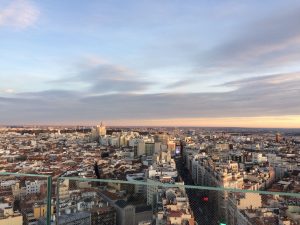 Sincerely, Spain: What are your favorite things about Madrid?
Sincerely, Spain: What are your favorite things about Madrid?
Sarah Willats: I could honestly write a whole book on what I love about Madrid but I’ll try to be brief in this section. It has a great vibe, it’s very international and there’s an endless amount of choices in terms of restaurants, cafés, bars, shops, and venues. Contrary to popular belief, it’s not as big of a city as most people like to think it is. A more accurate description of it is that it’s really a big city made up of a large collection of smaller neighborhoods. Once you get to know an area quite well, you’ll start to become familiar with some names and faces and in turn, they’ll start to recognize yours.
Teachers at the only public school I’ve ever worked in here as a language assistant told me that a lot of slang and expressions vary by neighborhood, as well as the speed in which madrileños talk and their accents, too. I am still of the opinion that madrileños speak Spanish the fastest in all of Spain (and I have also lived in Andalucía) but this can vary by person and their own background.
And while it depends on what you are interested in or what your field of specialty is, in general, there are lots of opportunities for work, exercise, and hobbies. You will always be meeting new people, hearing about new events, releases, and openings, and honestly, no two years have been the same for me personally. And lastly, the allure and enchantment of always discovering something new (streets, parks, neighborhoods, markets, shops, restaurants, trends, history, to name a few) have most likely been what have kept me here for so long – nearly five years now! Like the majority of major cities around the world, you won’t ever see all they have to offer because they are constantly changing and evolving and so are you.
Sincerely, Spain: If you’re having guests visit, what are the top things you have to share?
Sarah Willats: I have amassed quite a list of places that I love and sort of stumbled upon them on my own or through word of mouth from other madrileños or blogs. If someone was visiting me and my husband in Madrid, we could do the following things in either a full day (if you like moving at the non-stop tourist speed of doing things) or spread them out over the course of a weekend. What I would suggest doing with guests who come to visit would also depend on what they like to do and what main things they’d like to see during their time here. Here are a few places (which could all be visited in one day):
 Parque de Berlín. I lived near this park from 2018-2019 and loved the fact that I was a 5-min walk from such a lovely green space. It has three pillars from the old Berlin Wall that were given to the city of Madrid as a gift, several large fountains, and plenty of green space to sit and read, have a picnic or watch dogs run around in it.
Parque de Berlín. I lived near this park from 2018-2019 and loved the fact that I was a 5-min walk from such a lovely green space. It has three pillars from the old Berlin Wall that were given to the city of Madrid as a gift, several large fountains, and plenty of green space to sit and read, have a picnic or watch dogs run around in it.
Drinks in Plaza de Olavide. This is a square I used to walk to from where I lived near a Metro stop called Cuatro Caminos. I used to sit on the benches near its enormous fountain and people watch. There are at least half a dozen cafés, bars, and restaurants that bleed into the square with ample outdoor seating and tons of opportunities to kick back and relax or have a good conversation with a friend over whatever your drink of choice might be: vino, cerveza, tinto de verano, café, gin-tonic…
Visiting the Estación de Chamberí. An old yet carefully preserved metro station from the 60s that is now a part of the Andén Metro museum network and available to visit only on the weekends.
Trip to a local market. I love showing people around local markets and watching them discover the differences between Spanish open markets and U.S farmer’s markets. There are a lot more animal eyes staring back at you! I would suggest going to either el Mercado de las Maravillas (Tetuán District) or Mercado de la Paz (Barrio de Salamanca). You can even eat lunch inside most markets and I would especially recommend the tortilla de patatas that’s served at Casa Dani inside the Mercado de la Paz.
Tapas in either Lavapiés or La Latina. Both of these southern districts of the city are well-known for their excellent selection of either international food or Spanish food. Lavapiés is probably my preferred neighborhood just south of the heart of Madrid for Indian, Mexican, and Middle Eastern food and tapas (with their annual tapas festival creatively named Tapapiés). La Latina is where more traditional and fusion-style tapas bars are located. Plus, it’s a popular spot for meeting up after work to socialize or network.
Walking tour to see the major sights in the city center. This would most likely consist of seeing the following: Puerta del Sol, Plaza Mayor, Metropolis Building, Gran Vía, Plaza de Cibeles, Puerta de Alcalá and the the Paseo del Prado.
Visit a rooftop bar for sunset. Two things that are considered invaluable spaces in Madrid: terraces and rooftops. The Riu Plaza de España hotel, recently opened inside the Edificio España (dating back to 1953) in the past couple of years and its views of the city (and nearby mountains) are stunning. We even stayed there close to NYE 2020 as an end-of-the-year treat and I would wholeheartedly recommend this hotel, both for a rooftop drink or small gathering and to stay the night. It does get pretty windy up there being the eighth tallest building in Madrid, which is refreshing in the summer but very chilly on a brisk winter’s night!
Sincerely, Spain: What would be your top advice for people looking to move to Madrid?
Sarah Willats: Don’t expect to feel like you’ve settled in right away or even after the first few months. It will take time to get a feel for the city: its pace of life, and your ability to recognize places, street names, and Metro stop names and lines to list a few. I think it took me just under a year to feel like I had a handle on how to get around, where my favorite places were, and to have found spots that would be categorized as off the beaten path. Even back in 2016 when I first moved here, not every shop or restaurant had social media accounts and websites, and the bus and Metro apps weren’t as advanced as they are today. Writing things down in a note on your phone or inside a notebook still went a long way back then.
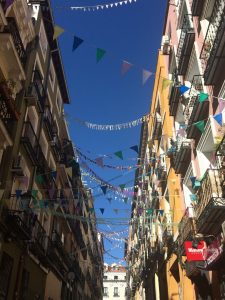 I’ve also heard from other expat residents in Madrid that it takes on average about three years to really feel like you’ve settled into the city and have developed this sense of knowing where things are and which places are good and which ones you should avoid. Yet, I’ve met quite a few people who have lived in the city for years but have never made the extra effort to learn simple things such as the names of streets past the most popular ones or the major Metro station interchanges.
I’ve also heard from other expat residents in Madrid that it takes on average about three years to really feel like you’ve settled into the city and have developed this sense of knowing where things are and which places are good and which ones you should avoid. Yet, I’ve met quite a few people who have lived in the city for years but have never made the extra effort to learn simple things such as the names of streets past the most popular ones or the major Metro station interchanges.
Personally, I feel that by not doing that, you’re shutting yourself off from fully immersing yourself in the city and all it has to offer in terms of helping you feel more at home. I always look for similarities to home whether that’s in architecture, designs, smells (flowers, bakeries, restaurants, perfume shops), colors, and names of wherever I live so I feel that bonds me to places much more strongly than it would if I had a “just passing through” mindset.
Sincerely, Spain: What is your relationship with Spanish?
Sarah Willats: This feels like a loaded question and it is for me personally. The Spanish language and I go way, way back and I find that the more I study and use it, the more my relationship with it evolves. While I didn’t formally start studying Spanish until the beginning of ninth grade, I had an “accidental” immersion experience when I was only three years old.
My mom has always loved reading and learning and it’s a love that she has passed on to both me and my older brother. Back in the early 90s, she found an interactive elementary Spanish class being taught through a college on what was called a wild feed on our satellite TV. My mom made note of the time it came on and because she had taken Spanish in high school, she thought that class would not only be beneficial for her but for her kids, who were budding young learners themselves.
We also used to subscribe to the Reader’s Digest magazine which was full of helpful, sort of out-of-the-box tips and she could’ve possibly gotten the idea that exposing your kids to a foreign language at an early age would have future benefits for them (spoiler alert: it does!) That whole experience lasted about a year, watching the program almost everyday. I had mastered (and remembered) a lot of the pronunciation in that time frame and recall running around outside in our backyard rattling off the Spanish letter “erre” as loud as I could for anyone to hear.
Other than watching that educational show and spending a month of 6th grade in a mini-Spanish class, I didn’t touch the language for several years. Once I started studying it in high school, it felt as if I were dusting off an old book and refreshing my mind about what I had learned before. Some parts of the grammar were complex, I won’t lie, but overall, I had a very positive experience studying the language then and I was fortunate enough to have a teacher who helped us build a solid foundation in grammar and pronunciation. I did, however, find myself trying not to show off so to speak because I felt I was farther ahead than my classmates. I didn’t study as hard and I definitely struggled a bit when reading and analyzing Spanish literature but it was honestly the most enjoyable class I had during those four years of my life.
One of the most important external factors in learning a language is your teacher. As I said before, I was fortunate enough to have had teachers and professors who instilled good grammar and pronunciation and really challenged me to go further with the language. It helped that Spanish came easier to me and I thoroughly enjoyed the subject, both in the classroom and outside of it, like I did on a couple of service trips to Mexico before college. One of my professors in particular took note of my good pronunciation on the very first day of class and jokingly said he couldn’t believe that I had started learning Spanish in Ohio.
It was thanks to mentoring and positive experiences like the ones I had had both in high school and college that really propelled me towards thinking about having a career using Spanish. In a sense, I did achieve that but it’s turned into so much more than that for me.
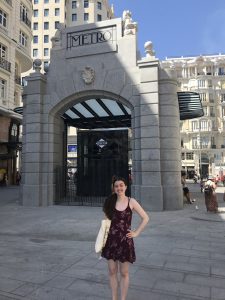 If you are reading this and thinking about moving to Madrid, just know in advance that becoming skilled at speaking Spanish isn’t impossible but it will take more work than it would in other parts of Spain. You will use it more than you might think you would even though a lot of madrileños have a working knowledge of English. And the opportunities are there but you’ll have to dig for them. I would recommend you have more than a beginner’s knowledge of Spanish before moving here or start classes right away or else it will be hard to establish a foundation for yourself grammatically speaking.
If you are reading this and thinking about moving to Madrid, just know in advance that becoming skilled at speaking Spanish isn’t impossible but it will take more work than it would in other parts of Spain. You will use it more than you might think you would even though a lot of madrileños have a working knowledge of English. And the opportunities are there but you’ll have to dig for them. I would recommend you have more than a beginner’s knowledge of Spanish before moving here or start classes right away or else it will be hard to establish a foundation for yourself grammatically speaking.
I’ve talked with other expats and heard various opinions on becoming truly fluent (or bilingual) in a foreign language and a good majority of them feel that it’s not possible unless you grew up in a home where both Spanish and English were spoken. I personally am not convinced largely due to my own experiences. After seven years in Spain and coming up on 18 years of interacting with and studying the language, I’ve spent thousands of hours listening to it, reading it and speaking it. Neither of my parents speak Spanish and as far as I know we don’t have any ethnic ties to Spain or any Latin American countries in our family line. What I do know is that I can’t picture my life without it. And while I will always have a bit of an accent when I speak it, I believe with a lot of hard work and immersion fluency can be achieved. It’s not a destination or exclaiming to yourself under your breath, “now I really speak Spanish!” but rather a journey.
And it’s become even deeper ingrained into my life these past few years. I’ve taken the language far, far away from the pages of my textbooks. I have had deep and meaningful conversations in it. I lived with native Spanish speakers for five years where I insisted we speak Spanish and solved problems in it in my various apartments. I’ve even felt angry or cried after saying something in the language. And on one of the most surprising nights of my life -the night I got engaged- I didn’t expect to so carefully word and feel what I was saying so strongly when I recounted the story to my long-time roommate. Afterwards, the realization that we’d have to split up and I’d have to move out and into a new place with my new husband overwhelmed me and I processed the thoughts first in Spanish and then in my native language.
Most recently, the pandemic has created an unexpected challenge with the language. What started out as adding in a little bit of an extra learning opportunity -adding subtitles to everything we watched- was actually setting me off on the path for burnout. Having been in Spain for almost 18 months straight with zero visits to any English speaking countries, I eventually became utterly exhausted from viewing and using the language as a necessity. Of course, I could always consume news and learn about new restrictions in English, but I preferred to get the “full scoop” in Spanish first just so I wasn’t potentially missing an important detail that had gotten lost in translation. I noticed in the last few months especially that I had been making silly little mistakes that I should know better not to make. The kind of mistakes you’d get annoyed at yourself for making but I just decided to move on from them.
Since my mind is very analytical and always wonders about why things are the way they are, it’s good for me to have an off button. Being married to and living with another native (albeit still from a different country) English speaker helps me do that naturally at home. Granted we also speak Spanish at home at times, it’s nice to have that off switch function activated after a fairly grueling day. And now that we’ve been visiting the U.K. for the last few weeks, I feel like I’ve gotten to push the reset button and really rest my mind and focus on using just English for a bit. I’m still using Spanish in various ways everyday but not in the same capacity as when I was back in Madrid.
In my opinion, it’s good to be aware of what you personally can handle while learning another language or spending most every day immersed in it. We all need to take breaks of various degrees from the rigors of daily life but just acknowledging (and then resting) you can’t always be at your best linguistically speaking every single day will help take the pressure off of yourself during your language learning journey.
Sincerely, Spain: Is there anything you would change about Madrid if you could?
Sarah Willats: My list of things about Madrid that could be changed is actually fairly short yet each topic is a bit of a contentious issue for the city. The top two things I wish I could change would be the price of rent and the average salary for a Madrid resident.
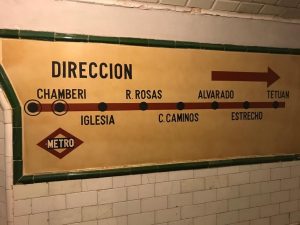 Rent in most of the city climbs steadily almost every year and the once affordable neighborhoods either see property developers swoop in and start building new luxury apartments on empty lots or they knock down older buildings and places of business just to rebuild and turn them into fancy apartments or hotels. Salaries really should be raised quite a bit each year because the euros residents are earning just can’t compete with the rising costs of living and the disproportionate rise in rent.
Rent in most of the city climbs steadily almost every year and the once affordable neighborhoods either see property developers swoop in and start building new luxury apartments on empty lots or they knock down older buildings and places of business just to rebuild and turn them into fancy apartments or hotels. Salaries really should be raised quite a bit each year because the euros residents are earning just can’t compete with the rising costs of living and the disproportionate rise in rent.
A lot of Madrid expats would agree with me in that the city government should prioritize residents over tourists but we’re not seeing that to be the case. That doesn’t mean we won’t keep bringing that issue up and sharing our thoughts on the matter. However, what we are seeing is the city starting to prioritize reducing its carbon emissions by building a new green space around Plaza de España in the city center and farther down in Madrid Río they plan to transform the site where the Vicente Calderón stadium (Atlético de Madrid) was into a new park with pedestrian friendly trails, plant lots of trees and add a few lookout points. I think those last two projects are a step in the right direction for the city in light of the ever present effects of climate change.
Lastly, if Madrid could one day become more bike friendly, that would be absolutely fantastic in terms of getting around the city and getting easy, daily exercise. For a major metropolitan city in Europe, there is a severe lack of bike lanes and bike friendly streets all around. The biciMAD bike share system helps provide bicycles for residents but I’m always extra cautious whenever I’ve taken one out on the road. It doesn’t have to become the next Amsterdam but more bike lanes would be much appreciated!
Sincerely, Spain: What are your future plans?
 Sarah Willats: Like a lot of expats in Spain, the pandemic has caused some setbacks in our future plans. Ideally, in the next couple of years my husband and I would like to move out of Madrid proper and into a suburb (or perhaps to another region). We want to stay in Spain for sure as it’s become a home to both of us and being from different countries ourselves, it’s a neutral “third” country if you will for us. We’re also still in the first few years of being married but we’d like to settle down somewhere more permanent in a more spacious apartment where we could raise a family, have a terrace garden (keyword: a real terrace!) and get a cat, an animal we both love dearly. I am working to expand my travel blog and consulting services as well as writing informative guides and books on living in Spain and managing life abroad. At the beginning of the summer, I published my very first e-book titled The Ultimate Guide to Madrid’s Transportation Networks, which is a comprehensive guide to getting around Madrid and giving you the full run down on the ins and outs of the city. I’d like to continue helping other expats and take the stress out of living in Spain so that they can instead focus on enjoying all of the amazing things this country has to offer.
Sarah Willats: Like a lot of expats in Spain, the pandemic has caused some setbacks in our future plans. Ideally, in the next couple of years my husband and I would like to move out of Madrid proper and into a suburb (or perhaps to another region). We want to stay in Spain for sure as it’s become a home to both of us and being from different countries ourselves, it’s a neutral “third” country if you will for us. We’re also still in the first few years of being married but we’d like to settle down somewhere more permanent in a more spacious apartment where we could raise a family, have a terrace garden (keyword: a real terrace!) and get a cat, an animal we both love dearly. I am working to expand my travel blog and consulting services as well as writing informative guides and books on living in Spain and managing life abroad. At the beginning of the summer, I published my very first e-book titled The Ultimate Guide to Madrid’s Transportation Networks, which is a comprehensive guide to getting around Madrid and giving you the full run down on the ins and outs of the city. I’d like to continue helping other expats and take the stress out of living in Spain so that they can instead focus on enjoying all of the amazing things this country has to offer.
Thank you so much for Sarah for taking the time to answer our questions with such depth. If you want to hear more from Sarah, you can find her online at the following places:
Blog: https://sarahlaviajera.com/
Instagram: https://www.instagram.com/sarah_la_viajera/
Twitter: http://twitter.com/sarahlaviajera
Pinterest: https://www.pinterest.com/sarah_la_viajera



